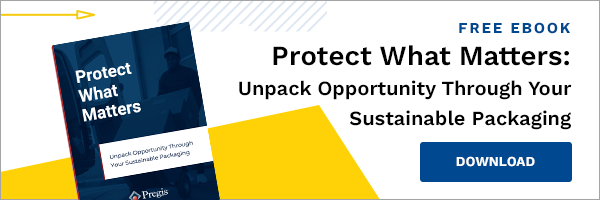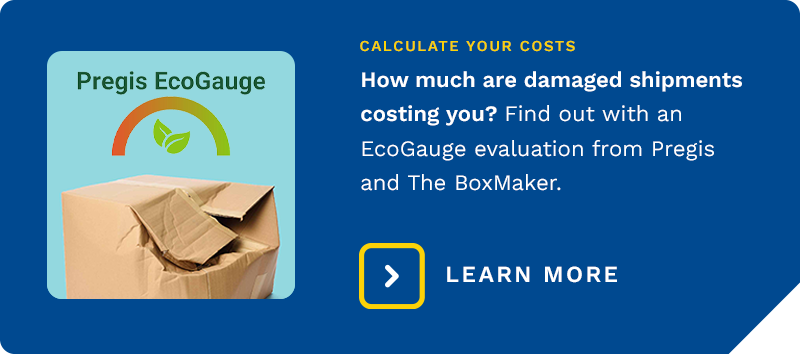The Environmental Cost of Damaged Shipments
The Many Costs of Product Damage
Products damaged during shipment incur many business costs. For example, there is the financial cost of replacing, repacking, and re-shipping the product and the costs associated with the loss of customer satisfaction. The third cost is the environmental cost, which is increasingly significant to both brands and consumers.
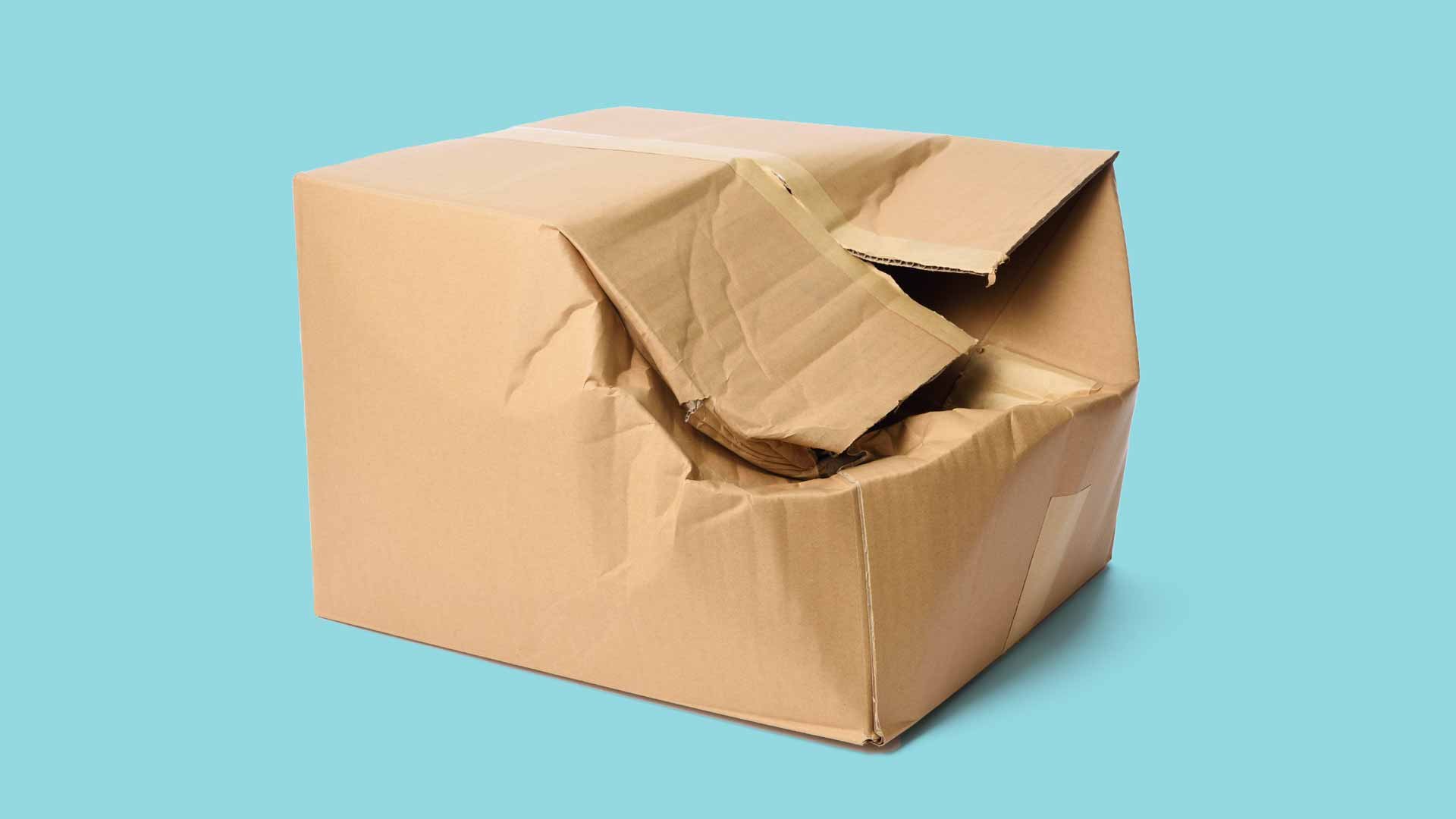
Damage Rate: Your Environmental Cost Indicator
According to a 2021 Global Buying Green Report, 67% of consumers say it’s important that products they purchase be packaged in recyclable material. As a result, many companies are increasing their use of paper-based packaging materials to meet consumer preferences. While these initiatives play an important role in sustainability, one of the most impactful ways brands can decrease their impact on the environment is to reduce their damage rate. To better understand the effect of damage rate on the business, consumer, and the environment, let’s take a closer look at the product path of a damaged shipment.
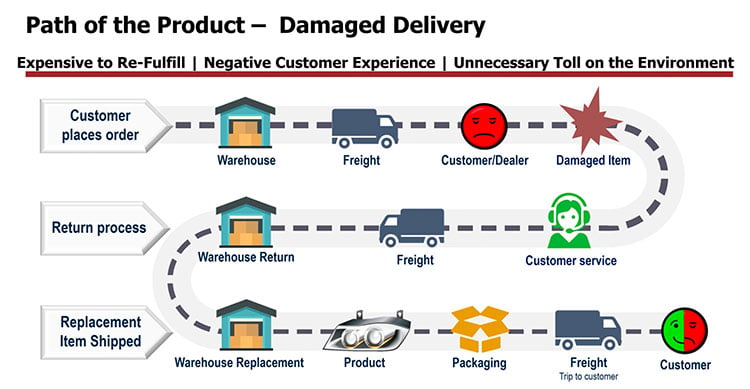
The product path begins when the customer places an order. Their order is picked and packed in the warehouse and then shipped out. When the customer receives their product and finds it is damaged, this results in a loss of customer satisfaction. Next, the product must be returned, requiring the help of customer service. The damaged product is then transported back to the warehouse, where it is most likely disposed of. Then, the product is replaced, repackaged, and re-shipped to the customer.
All of this results in a loss of revenue to facilitate the return, repackaging, and replacement process and a negative environmental impact that more than doubles that of the original shipment.
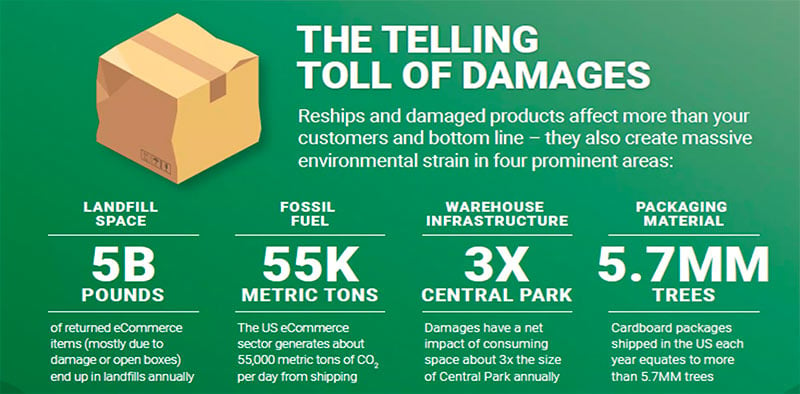
The Environmental Impact of Damaged Goods
Damaged products and the process of replacing them strains four prominent areas when it comes to the environment: landfill space, fossil fuel, warehouse infrastructure, and packaging materials. Five billion pounds of returned e-commerce packages end up in landfills yearly. Additionally, e-commerce shipments generate 55k metric tons of carbon dioxide daily. Regarding warehouse infrastructure, damages have a net impact of consuming space about 3x the size of Central Park annually. Moreover, the number of corrugated packages shipped in the United States annually equates to about 5.7MM trees.
If one were to investigate all the damage caused by reshipping one package, it would be:
- 13 ft squared of habitat lost
- 1679 units of heat produced
- 10 pounds of landfill waste
- 8 kWh of electricity used
- 01 trees
- 4 pounds of CO2 emissions
Overall, UPS and FedEx ship about 8.6 billion packages yearly, with the damage rate being 10%, which means about 860 million packages are reshipped annually. All the data shown above shows how much of a cost a damaged product comes at and how fixing this issue can tremendously help the environment.
A Deeper Dive
If reducing product damage is one of the most critical ways to alleviate environmental impact, why aren't more companies tackling this issue? Check out this ebook by Pregis that explains how the disconnect between many companies' sustainability goals contributes to this problem.
Changes Companies Can Make
The environmental impact of damaged products is significant. Here are four changes companies can make to reduce their effect on the environment when it comes to packaging:
- Protect products using the latest materials and technologies, helping prevent product damage in the first place.
- Use recyclable packaging whenever possible, allowing for straightforward package disposal and less landfill waste.
- Instruct customers on how to dispose of packaging materials properly.
- Develop a strategy to reduce their damage rate and keep it down.
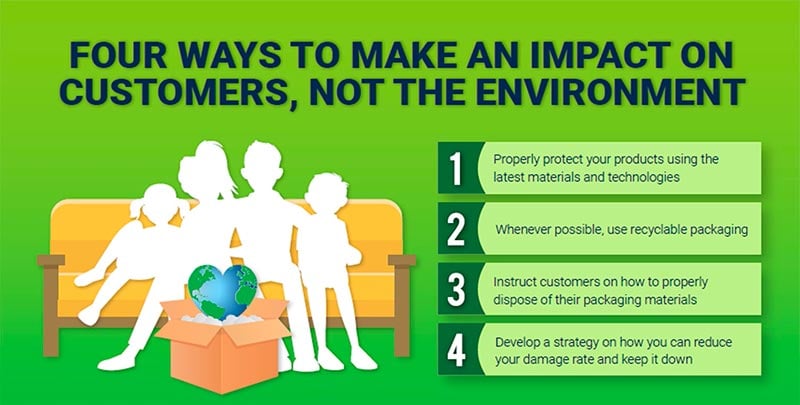
The Bottom Line: Product Damage = Environmental Damage
While an individual package may seem small, its environmental impact can be significant when damages go unchecked. As consumers continue to favor sustainable options and pressure mounts for companies to reduce costs, brands focused on reducing damage will be positioned to please their customers and their bottom line.
To learn more about improving your business' use of sustainable packaging, watch BoxMaker University's on-demand webinar, “The Art and Science of Sustainable Packaging” presented by Pregis. Watch Now.
All images and data courtesy of Pregis.
Subscribe
Share this post
Similar Articles

Paper, Plastic, or Foam: Selecting the Right Protective Packaging Materials
Learn how to select the right packaging materials to protect your product, brand, and the planet.

Choosing the Right Void Fill for Shipping Boxes
Choosing the right void fill for your shipping boxes and product needs is key to minimizing damage a …

Exploring Alternatives to Foam Protective Packaging
Supply chain limitations are increasing the need for custom fabricated foam alternatives. Explore PE …
